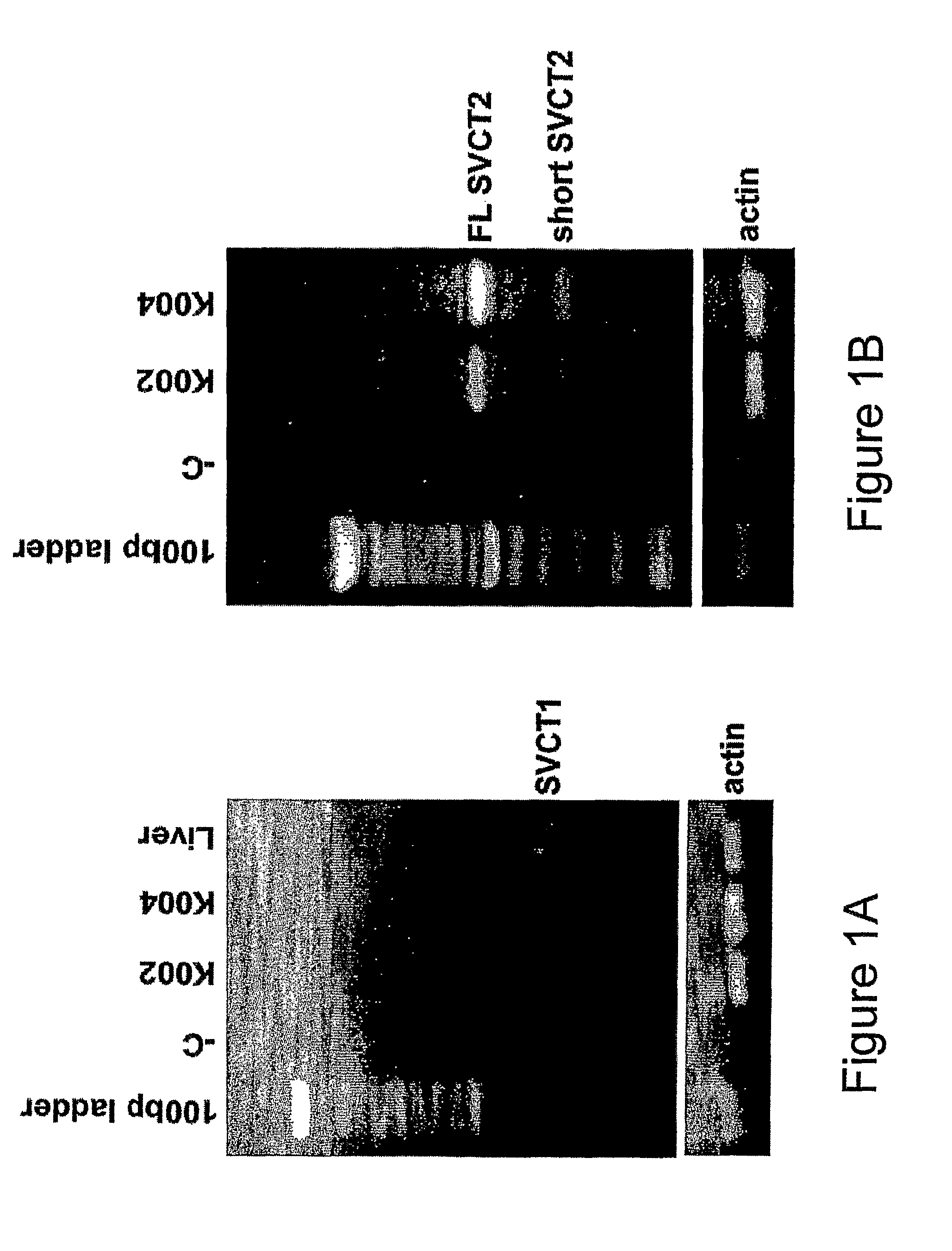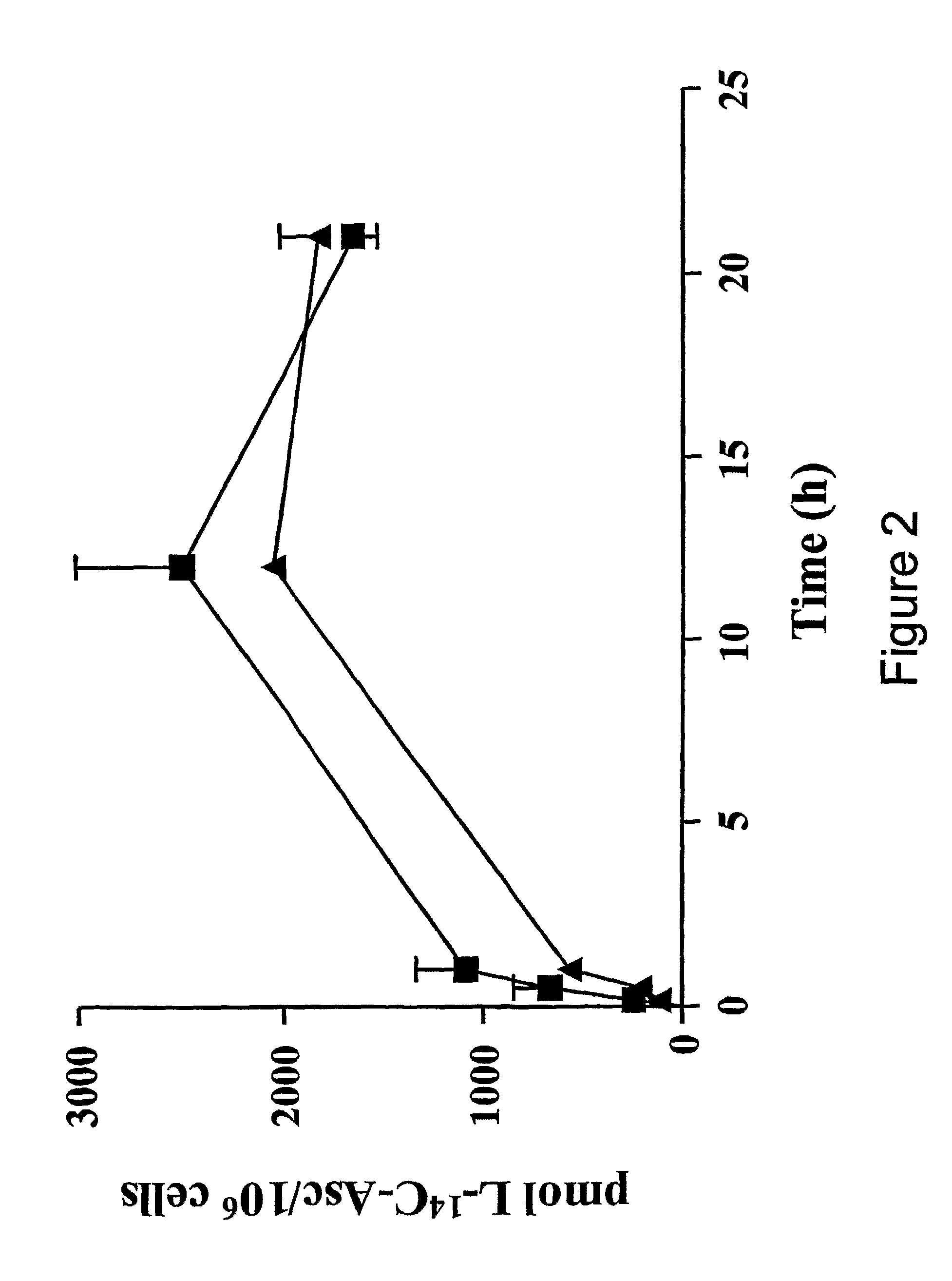Facilitated transport of bisphosphonates by vitamin C
a technology of vitamin c and bisphosphonates, applied in the field of facilitation of transport of active agents, can solve the problems of poor bioavailability, achieve the effects of reducing the incidence of gastrointestinal absorption of bisphosphonates, facilitating cartilage uptake, and minimizing the occurren
- Summary
- Abstract
- Description
- Claims
- Application Information
AI Technical Summary
Benefits of technology
Problems solved by technology
Method used
Image
Examples
example 1
[0097]The following compounds and disorders are additional examples of how the present invention may be carried out:
[0098]Bisphosphonate derivatives: Bisphosphonates have been shown to have chondroprotective effects. These agents are poorly absorbed and concentrations to cartilage are suboptimal. We will couple these agents to AA / DHA / or A2P (at the 5 or 6 positions) to improve gastrointestinal absorption and chondrocyte uptake. These studies were enabled using an analog of risedronate conjugated to AA, 6-O-{N-[6-[(bisphosphonomethyl)amino]pyridin-3-yl]}succinyl-L-ascorbic acid. This and other structures to be used in these claims are shown below.
[0099]Peptides (with anti-inflammatory, anti-degenerative, or anabolic properties): Peptides are difficult to transport across the cellular membrane. We will couple AA / DHA / or A2P (at the 5 or 6 positions) to facilitate concentrative transport of specific peptides. One example of an anti-inflammatory peptide is a small apoE-mimetic peptide ...
example 2
Chondrocyte Transport and Concentration of Ascorbic Acid is Mediated by SVCT2
[0108]We have reported that cartilage may be a storage site for AA, having shown that cartilage concentrations of AA are 3-8 times higher than levels in synovial fluid [23]. This is consistent with the essential role of AA in type II collagen extracellular matrix synthesis. However, it was not determined whether the AA was concentrated inside the chondrocytes or trapped in the cartilage extracellular matrix. Therefore, in this study we have examined the ability of chondrocytes to concentrate AA. We have also evaluated the mechanism of transport of the reduced form of AA in primary human chondrocytes to discern the physiologically relevant pathways of AA transport in cartilage. Our data represent the first evidence that chondrocytes concentrate AA and that this concentrative transport is mediated by SVCT2.
Materials and Methods
[0109]Chondrocyte Isolation and Cell Culture. Articular cartilage was obtained from...
example 3
Dehydroascorbate Transport in Human Chondrocytes is Regulated by Hpoxia and is a Physiologically Relevant Source of Ascorbic Acid in the Joint
Materials and Methods:
[0134]Chondrocyte Isolation and Cell Culture. Articular cartilage was obtained from human knee surgical waste tissues at the time of knee replacement surgery (n=7). Primary human chondrocytes were isolated from cartilage specimens, which were harvested from non-lesioned areas. For each specimen, the cartilage was minced and the chondrocytes isolated by enzymatic digestion, similar to methods published previously (Kuettner K. et al. Synthesis of cartilage matrix by mammalian chondrocytes in vitro. I. Isolation, culture characteristics, and morphology. J. Cell Biol. 1982; 93(3):743-750). Cells at each passage were tested, using reverse transcription polymerase chain reaction (RT-PCR), for the expression of the chondrocytic genes, type II collagen and aggrecan.
[0135]Dehydroascorbate Transport Assay in Isolated Primary Human ...
PUM
| Property | Measurement | Unit |
|---|---|---|
| Temperature | aaaaa | aaaaa |
| Temperature | aaaaa | aaaaa |
| pH | aaaaa | aaaaa |
Abstract
Description
Claims
Application Information
 Login to View More
Login to View More - R&D
- Intellectual Property
- Life Sciences
- Materials
- Tech Scout
- Unparalleled Data Quality
- Higher Quality Content
- 60% Fewer Hallucinations
Browse by: Latest US Patents, China's latest patents, Technical Efficacy Thesaurus, Application Domain, Technology Topic, Popular Technical Reports.
© 2025 PatSnap. All rights reserved.Legal|Privacy policy|Modern Slavery Act Transparency Statement|Sitemap|About US| Contact US: help@patsnap.com



